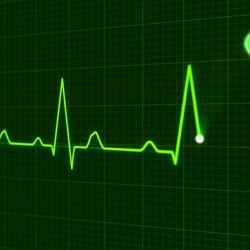In an ironic but exceedingly fortunate twist of fate, American Heart Association (AHA) President and interventional cardiologist John Warner, M.D. hours after delivering his plenary address to AHA Scientific Sessions 2017 conference attendees went into full cardiac arrest in his hotel room. Why was such an event that claims the lives of nearly 90% of the more than 350,000 people who endure an out-of-hospital cardiac arrest (OHCA) each year in the U.S. so fortuitous?
Because he lived to tell the tale.
Since survival is fundamentally linked to early, rapid intervention of cardiopulmonary resuscitation (CPR), Dr. Warner’s story reflects an ideal set of circumstances that we all could only dream of should we or a loved one experience such an emergency.
For one, the event was witnessed. As time is of the essence, any delays in intervention can contribute to long-term disability and death. While his wife and son ran to the hallway screaming for help, Dr. Warner’s daughter initiated chest compressions. Shortly thereafter, family members returned to the hotel room with pediatric cardiac intensive care physician Tia Raymond, M.D. and pediatric critical care nurse Janie Garza, R.N. who resuscitated him with the help of the hotel’s portable defibrillator (AED= automated external defibrillator). He was then transported to the hospital. (To hear the accounts of all involved, click on this link to watch the video released by the AHA).
For those who receive immediate (or within the first few minutes) CPR, their chances of survival improve two to threefold. Only 46% of people who experience this get the help needed. In the home is where 70% take place, so possessing the ability to save a life will tend to be orchestrated by a loved one.
As you may recall, Tom Petty recently succumbed to cardiac arrest. To review his story and understand the difference between it and a heart attack, click here.
Though Dr. Warner’s harrowing story took place under the best of the worst circumstances, the reality is anyone can be trained to perform the life-saving measures that facilitated his wonderful outcome. Learning CPR and how to use AEDs can give people confidence to remain calm in a crisis and systematically function to get the help needed in the most timely of ways. This is a New Year’s resolution that we can all achieve.
With 2018 underway, why not make CPR education a family affair and our nation’s collective resolution? This proactive measure can benefit you throughout life.
Note(s):
To appreciate why CPR training should be mandatory in schools and how variable legislative language undercuts this possibility, review Want A Nation Of Super Heroes? Early CPR Makes Every Second Count!
To understand some barriers to CPR, read During Sex, In Public - Why Are We So Afraid Of CPR? and Can Starbucks and Pizza Shops Prevent Death?
Check out #7 (Delivery-Focused Technology) in Top 8 Med, Tech Advances Of 2017. Plus, Prediction For Future. to read about new approaches to overcoming these barriers.

